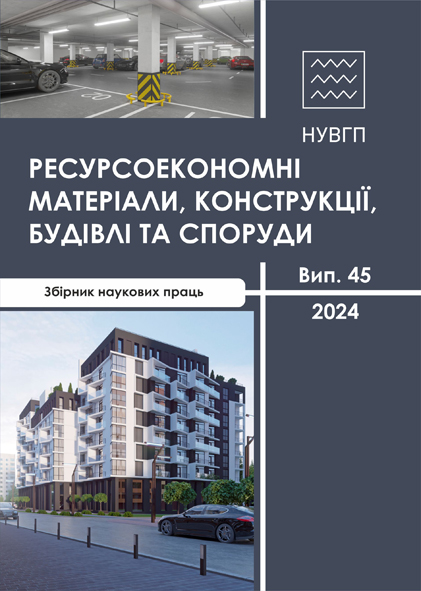GEOGRAPHIC HEIGHT CONSIDERATION IN THE DESIGN OF ENCLOSURE STRUCTURES IN MOUNTAIN REGIONS
DOI:
https://doi.org/10.31713/budres.v0i45.23Abstract
According to the results of the heat losses analysis through the enclosing structures of civil buildings in the mountains, the values of the heat transfer resistance that are necessary for the equalization of heat losses in mountainous and plain areas have been established.
Meteorological data of 78 plain and 37 mountain observation points located in Crimea, Lviv, Ivano-Frankivsk, Chernivtsi and Zakarpattia regions were used for the study. According to the data of 115 weather stations, heat losses through the walls and through heated attics and mansards of residential and public buildings were determined. Heat losses increase significantly as the height of the building above sea level goes up. The average heat losses due to enclosing structures placed on flat terrain at an altitude of up to 400 m above sea level are quite similar for Carpathian and Transcarpathian regions, but significantly lower in Crimea.
The required values of the heat transfer resistance of enclosures placed at heights of 400...1429 m above sea level are determined from the condition of equality of heat loss through these structures to the average losses through enclosures in the flat area of the same region. The increase in the required heat transfer resistance of enclosing structures with increasing height above sea level is reflected by the geographic height coefficient, which is equal to the ratio of the required heat transfer resistance for the selected observation point to the average heat transfer resistance of a similar structure located in the flat terrain of the corresponding region of Ukraine. The closeness of the geographical height coefficients for walls and roofs made it possible to describe their growth with height with one analytical function, which provides a margin of thermal reliability for 80% of mountain observation points.
It is recommended to increase the heat transfer resistance by multiplying the values established in DBN V.2.6-31:2021 for the relevant temperature zone by the proposed factor of geographic height when designing enclosing structures at heights of more than 400 m above sea level.

